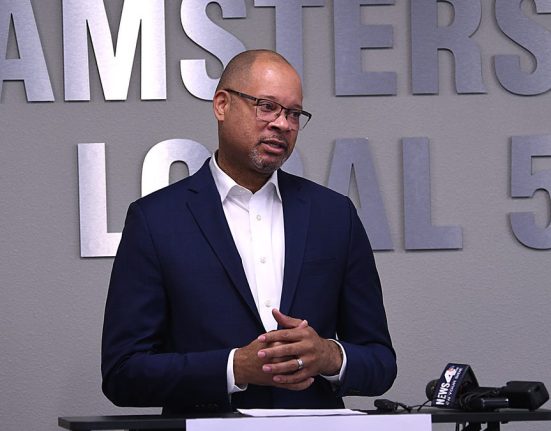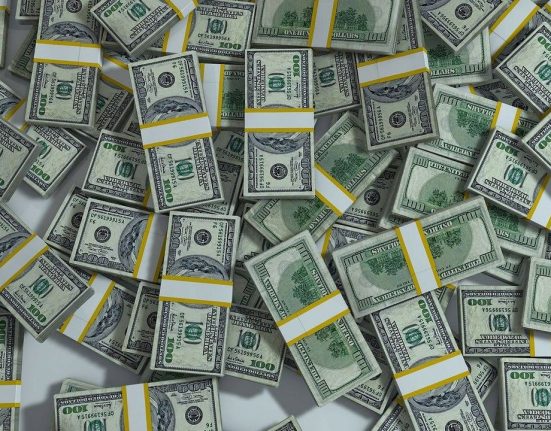US manufacturers secured the business tax provisions they’d hoped for in Donald Trump’s budget megabill, but the president’s erratic trade policy risks tempering any pronounced pickup in capital investment.
Many producers this year had put spending plans on hold due to uncertainty surrounding the tax and spending legislation as well as Trump’s vacillating tariff announcements.
Manufacturers can now breathe a little easier after Trump’s signature $3.4 trillion budget package reinstated a 100% first-year bonus depreciation for investment in equipment and factories. The legislation also allows for an immediate deduction for research and development costs and more generous interest deductibility.
Making the tax provisions permanent will cause some companies to make capital investments, even if it’s difficult to predict how much, said Charles Crain, managing vice president of policy at the National Association of Manufacturers, which made extending the provisions a priority.
“There are certainly still impediments to capex on the table, but tax was a huge one and it is now off the table,” Crain said.
Still, some expect any notable upturn in capital expenditures to take longer to evolve because of the administration’s frenetic tariff announcements as well as the levies themselves. Higher duties on sectors, such as metals, risk driving up costs of production.
“If companies can’t price their product accurately because the input costs keep changing due to an ever-changing tariff environment, then I think their decisions will stay largely frozen,” said Susan Spence, chair of the Institute for Supply Management’s Manufacturing Business Survey Committee.
Trump this week sent letters to US trading partners threatening high tariff rates, though he left the door open for negotiating trade deals. He also extended a Wednesday deadline to impose higher punitive measures until Aug. 1.
The president said his administration will impose a 50% duty on imported copper. Having already placed levies on steel and aluminum, there is notable concern from US buyers that the metals tariffs risk undermining Trump’s goal of reviving manufacturing.
Business surveys have consistently showed waning capital-spending intentions following the November election. But the Association of Equipment Manufacturers is optimistic that the new legislation will provide the certainty needed to bolster investment in domestic manufacturing, especially by small and mid-size companies, said Kip Eideberg, senior vice president of government and industry relations.
Optimism over the passage of the president’s One Big Beautiful Bill Act has helped drive up stock prices.
“When I go around the country or CEOs come into Treasury to see me, they’ve all been held captive by a lack of certainty on this tax bill,” Treasury Secretary Scott Bessent said on CNBC last week. “And now that they know that they can have a hundred percent full expensing on equipment and for factories, I think we are going to see things take off between now and Labor Day.”
Leigh Lytle, chief executive officer of the Equipment Leasing and Finance Association, said she also expects the tax provisions will encourage companies to buy sooner, rather than later, and boost hiring. While tariffs have been a concern, the provisions “provide long-term certainty that these businesses need,” Lytle said.
Indeed, some small manufacturers are taking the plunge. Courtney Silver’s plans to spend more than $1 million on equipment for her Concord, North Carolina machine shop were put on hold until it was clear whether Congress would allow businesses to fully expense most equipment purchases. Now she’s ready to move forward.
“It give us the confidence to take that step,” said Silver, president of Ketchie Inc. “It’s the right move to support our team, grow smarter, and stay competitive.”
In northern Maryland, Giuseppe Riva expects to sell more steel fabrication machines with the new bonus depreciation rules, at least judging from what he saw in Trump’s first term.
At the time, Riva was leading the North American unit of Italian woodworking machine maker SCM Group. Many of his clients were furniture makers, who spent tens of thousands of dollars for SCM’s computer-guided wood-cutting machines.
After Congress passed the 2017 tax cut bill, enacting an earlier round of bonus depreciation, Riva said his clients opportunistically ordered new woodworking machines worth roughly equal to their tax savings.
“Instead of paying taxes, the thought was, ‘Send me a new machine,’” Riva said.
Riva has since moved into a new role leading the North American unit of Italy-based Ficep S.p.A., which makes machines that cut and drill steel. Riva said his products now cost more, averaging over $1 million. He expects customers to be more measured with their purchases.
However, Riva anticipates a pickup in sales because the new tax rules open the door to bigger, longer-term purchases, he said.
Holding back
US capital expenditures rose after the introduction of 100% bonus depreciation in the 2017 tax act, but it was not the key driver because other factors encouraged firms to invest, including slashing the corporate tax rate, Pantheon Macroeconomics economists Samuel Tombs and Oliver Allen said in a note.
While the tax provisions likely will lift business investment in the medium term, “we expect firms to hold back from deploying their capital until the tariff outlook has clarified,” the Pantheon economists said.
There’s little to suggest the tax provisions alone will spur a large burst of capital investment, said Michael Hicks, an economics professor at Ball State University in Indiana and director of its Center for Business and Economic Research.
Most manufacturing-intensive states accommodate new capital investment with large subsidies, and there’s already been a burst of manufacturing capital investment – including record factory construction – spurred in part by federal incentives under former President Joe Biden, Hicks said. And Trump’s tariffs continue to beleaguer manufacturers, he added.
“In the end, the ‘best case’ likely tariff scenario adds far more costs to most capital investment than this legislation could possibly offset,” Hicks said.







